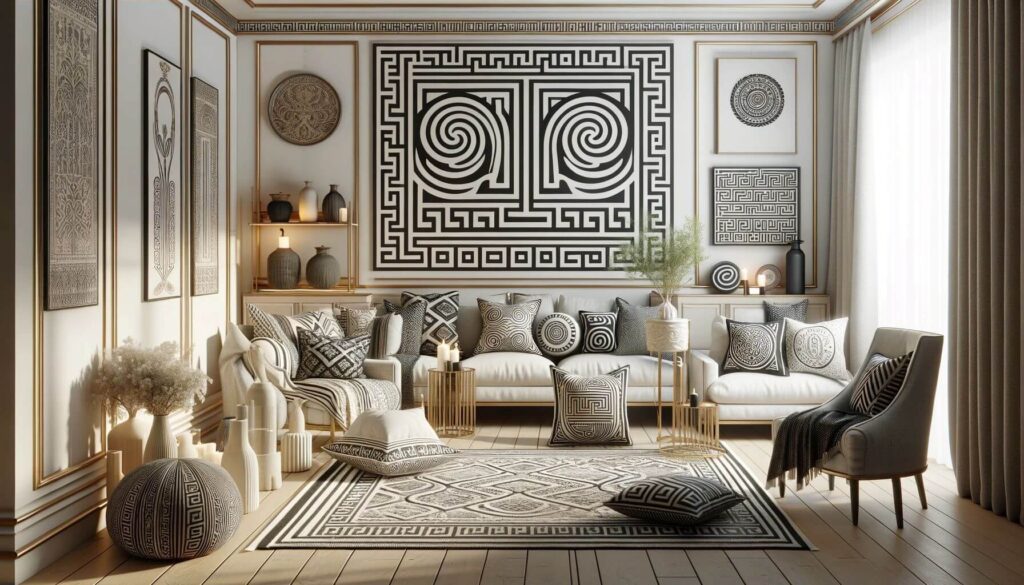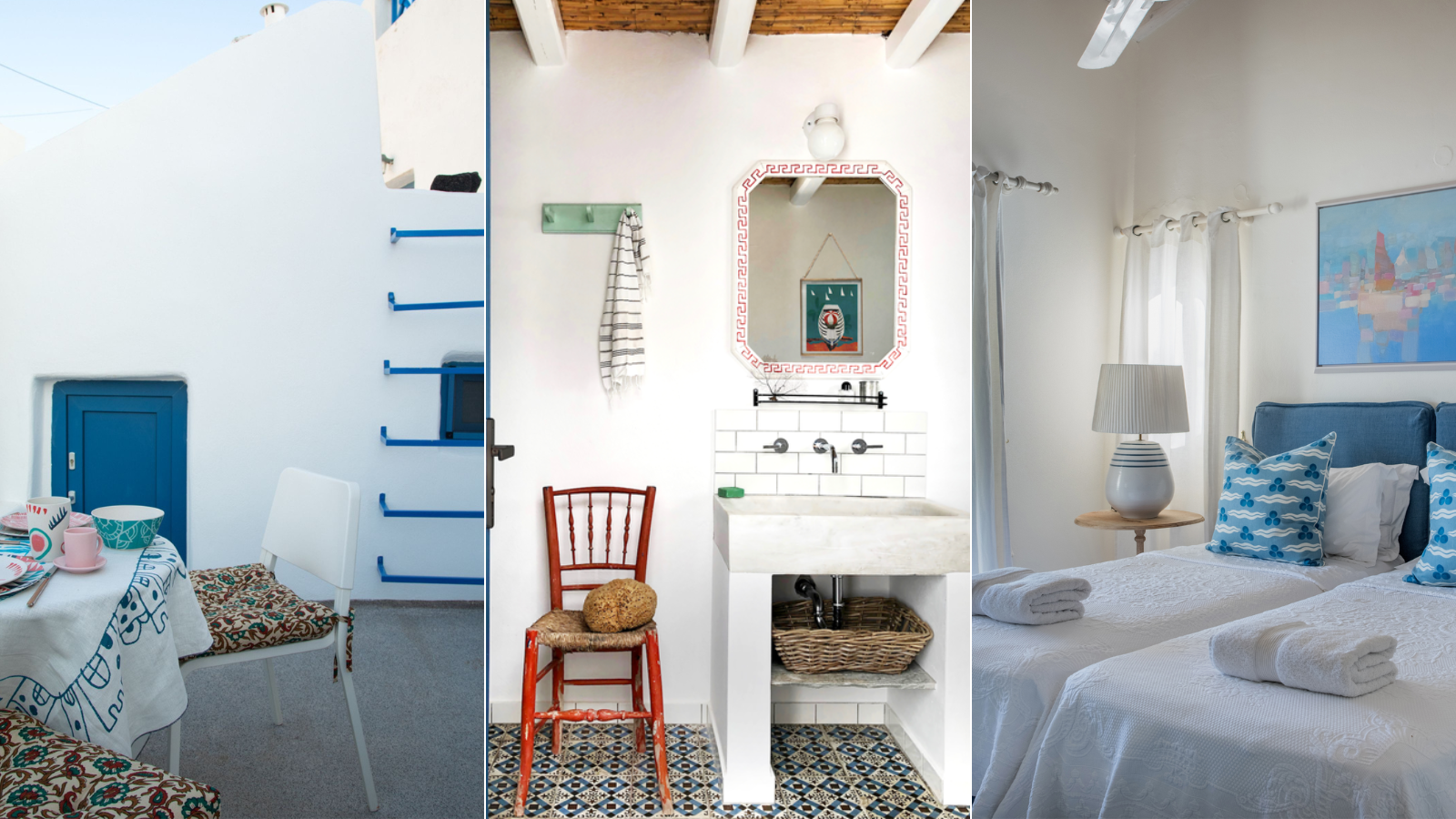Introduction to Greek Style Interior Design
Greek style interior design is more than just a trend; it’s a way to embrace a timeless aesthetic that celebrates history, nature, and simplicity. As someone passionate about interior design, I have always been captivated by the elegance of Greek architecture and decor. From the stunning white-washed walls to the intricate details of classical motifs, the Greek style brings a unique charm that’s hard to replicate.
In this guide, we will explore the key elements of Greek style interior design, its history, and how you can incorporate its elegance into your own space. Whether you’re redecorating your living room, kitchen, or even your bedroom, this article will provide you with everything you need to create your own oasis inspired by the beautiful Grecian landscapes.
Understanding the Elements of Greek Style
The Greek style is deeply rooted in classical heritage, characterized by specific elements that define its allure. Below, we break down the core components:
1. Color Palette
The colors of the Greek style are often soft and muted. Here are the primary hues:
- White – symbolizes purity and simplicity
- Soft Blue – reminiscent of the Aegean Sea
- Earthy Beige – connects to natural surroundings
- Sunset Orange and Warm Yellows – bring warmth and intimacy
2. Materials
Natural materials play a vital role in Greek design. Some commonly used materials include:
- Marble – used in floors and statues
- Wood – for furniture and accents
- Terracotta – seen in pots and tiles
- Textiles – linen and cotton for soft furnishings
3. Furniture Styles
Greek furniture tends to be simple yet elegant, focusing on functionality. Popular styles include:
- Low seating arrangements
- Lightweight, movable furniture
- Carved wooden pieces
- Textured cushions and throws

4. Architectural Features
Classical Greek architecture influences interior design significantly. Elements include:
- Columns – especially ionic and doric styles
- High ceilings and open spaces
- Large windows for natural light
Creating a Greek Style Interior: Step-by-Step Guide
Turn your home into a serene sanctuary inspired by the Greek aesthetic with these practical steps:

Step 1: Choose Your Color Scheme
Start with a neutral base—white or light beige walls provide an ideal backdrop. Add splashes of blue with decor items such as cushions, vases, or artwork.
Step 2: Invest in Quality Materials
Opt for natural materials. If you’re unable to afford marble flooring, consider laminate that mimics its appearance. For furniture, choose pieces made from solid wood for longevity.

Step 3: Select the Right Furniture
Look for light, airy pieces that allow for easy movement. Incorporate Greek motifs through decorative pillows and throws.
Step 4: Add Architectural Details
Enhance your space with columns or archways. Even small architectural touches can give the feel of grandeur.

Step 5: Decorate Thoughtfully
Use Greek-inspired decor such as pottery, sculptures, and artwork featuring classical themes. Remember, less is often more in Greek design.
Pros and Cons of Greek Style Interior Design
| Pros | Cons |
|---|---|
| Timeless elegance | Can be costly to achieve authentic materials |
| Focuses on natural light | Requires specific climate for outdoor elements |
| Promotes simplicity and functionality | May feel too minimalistic for some tastes |
| Versatile in theme | Potential difficulty in sourcing authentic decor items |

Incorporating Greek Style in Different Rooms
Whether you’re updating your living room or your kitchen, the Greek style can enhance any area in your home. Here’s how:
Living Room
Use a combination of white walls and soft blue accents. Opt for low, comfortable seating and incorporate large windows for natural light.

Kitchen
Incorporate earthy colors and rustic wooden elements. Use terracotta pots for herbs and fresh flowers.
Bedroom
Soft linens, neutral palettes, and natural light should be emphasized. Add Greek-inspired art pieces to create a calming atmosphere.
Outdoor Spaces
Greek design emphasizes the connection to nature. Incorporate outdoor seating, lush greenery, and terracotta pots.
Personal Experience: My Journey with Greek Interior Design
When I first decided to incorporate Greek style into my home, I was struck by how much it transformed my space. The calming colors and natural materials created an atmosphere that felt serene and welcoming. As I added personal touches, like handmade pottery and linen drapes, I felt a connection to the history and beauty of Greek culture.
One of my favorite additions has been a small herb garden on my kitchen window sill, echoing the lush landscapes of Greece. Over time, I realized that Greek style is not just about aesthetics; it’s about creating a lifestyle that embraces simplicity and connection to nature.
FAQs About Greek Style Interior Design
What are the key features of Greek style interior design?
Key features include a light color palette, natural materials like marble and wood, classical architectural details, and functional furniture with elegant designs.
How can I incorporate Greek style in a small space?
Use mirrors to reflect light, opt for lighter colors to create an airy feel, and choose multi-functional furniture to maximize space.
Are there modern adaptations of Greek style?
Yes! Modern adaptations often include minimalist furniture, contemporary art pieces, and fusion techniques that blend traditional Greek elements with modern design trends.
Is Greek style expensive to implement?
While authentic materials like marble can be costly, there are budget-friendly alternatives such as laminate or even DIY projects that can still evoke the Greek aesthetic.
Can Greek style work in a contemporary home?
Absolutely! Greek style can be modernized by incorporating sleek lines, contemporary lighting, and updated accessories to harmonize with contemporary decor.